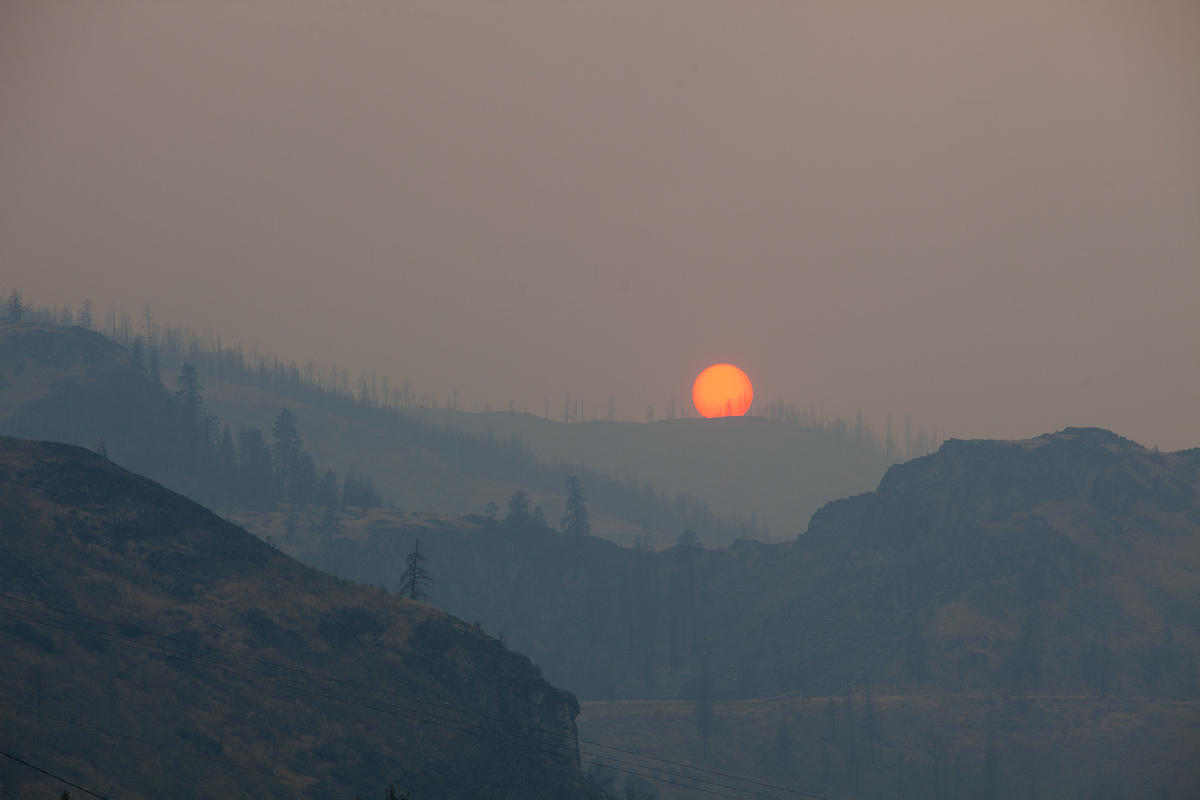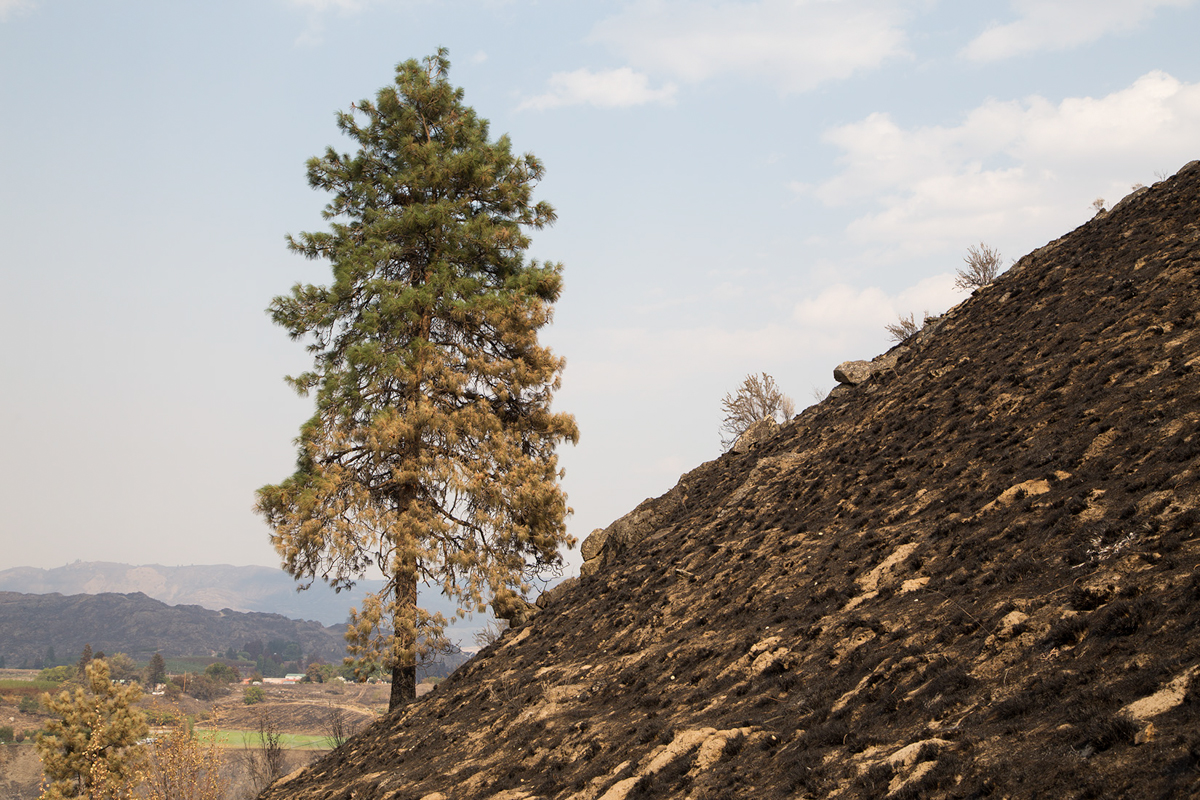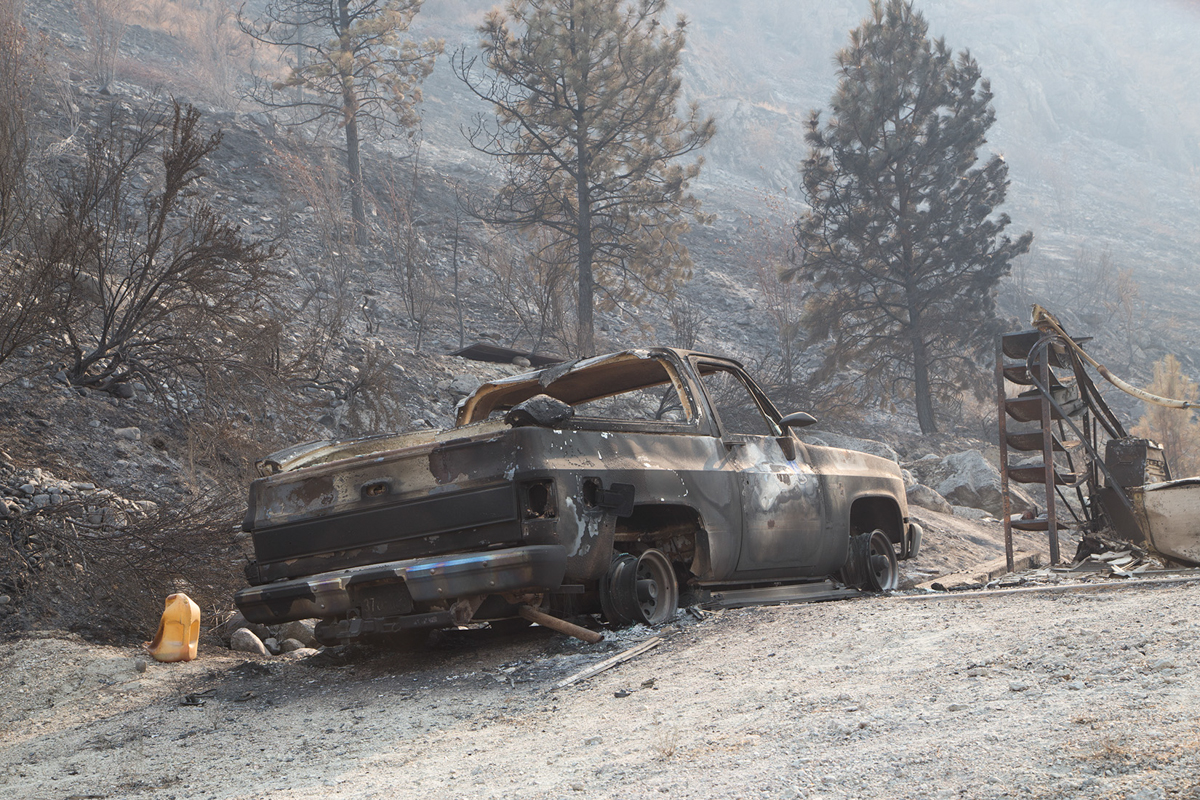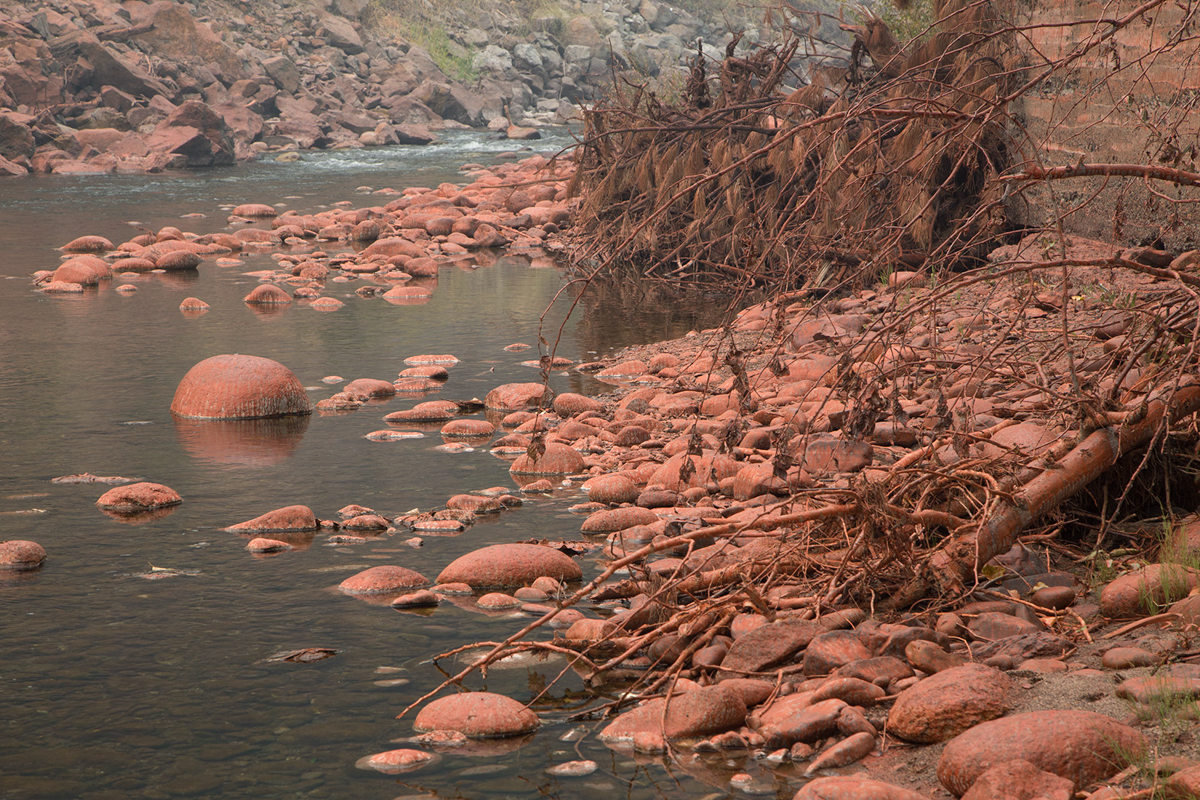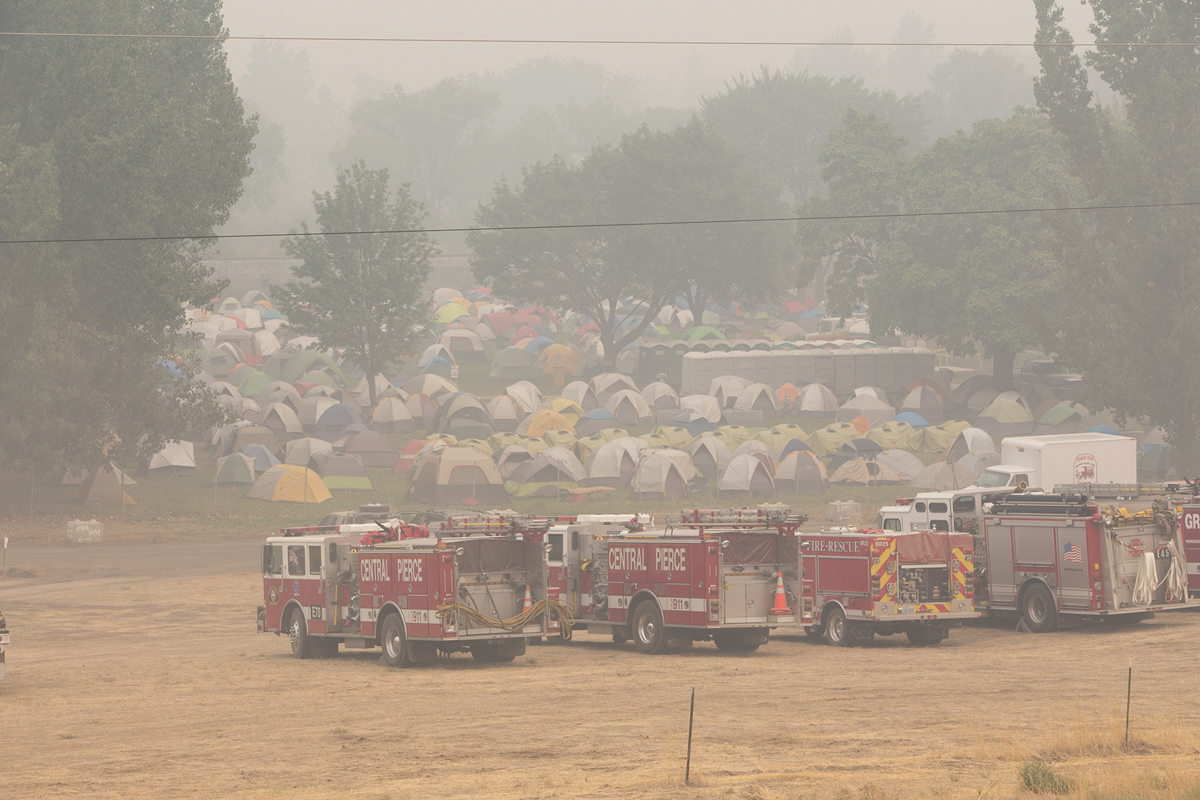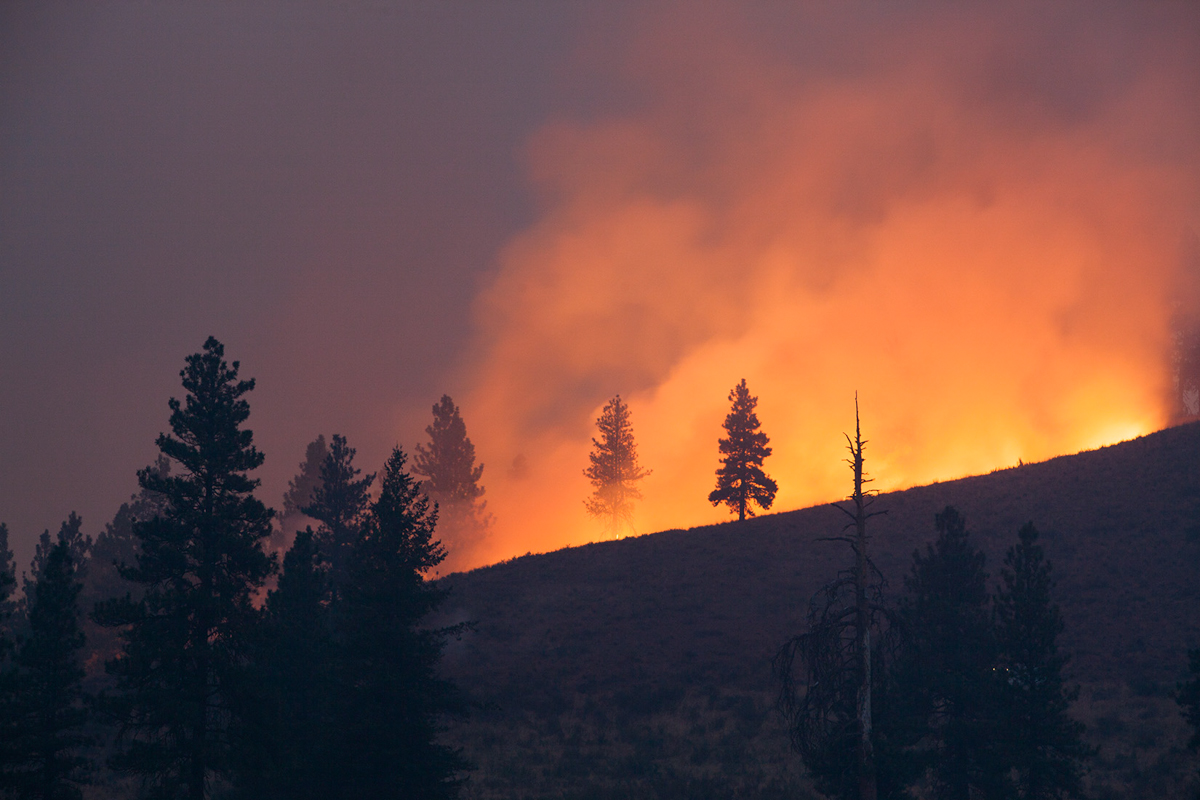The Washington state Legislature has passed HB 1168, legislation that will give state agencies and local communities a fighting chance to get ahead of the growing threat of wildfire to communities across the state.
Learn. Share. Vote.
We Are Your Voice For Nature, Close to Home and Afar
Urge Congress to Support the Wildfire Disaster Funding Act
Environmental Lobbyists Use Their Outside Voice
A Scientist's Adventure on the Hill
Written by Phil Levin, Conservancy Lead Scientist
The gentle rocking of the train car subsides as it pulls into the station called “The Mall”. My fellow passengers, dressed in the uniform of The City, and wearing important frowns, look up in synchrony from their phones. We join the scurrying masses through subterranean tubes, eventually rising to the surface where we step on the stage of history. Sandwiched between the U.S. Capital and Lincoln Memorial, I can only smile, as I make my way along the National Mall to the business entrance of the Capital.
A very large man with a very large rifle greeted me and my colleagues as we made our way through security and into a conference room on the Senate side of the building. I’ve given briefings on the Hill before, but this was my first time as a Nature Conservancy rather than government (NOAA) employee. The reason for my smile is now clear to me—since I am no longer a representative of the executive branch, I am allowed to eat Congressional cookies!
The conference room was overflowing with 50 Senate and House staffers, all of whom focus on ocean issues. We were there to roll-out a new report from the Lenfest Fishery Ecosystem Task Force. The report, Building Effective Fishery Ecosystem Plans, provides guidance to fisheries managers on implementing ecosystem-based fisheries management—a holistic place-based approach that seeks to sustain fisheries by maintaining healthy, productive and resilient ecosystems. The Task Force, convened with support from the Lenfest Ocean Program, consisted of 14 preeminent fisheries scientists from around the U.S. and world. Timothy Essington, of the University of Washington and I led the task force.
Our report highlights that connections matter. Indeed, this is the unifying principle of ecosystem-based fisheries management. Ecological connections matter because fishing affects target species, predators, prey, competitors, bycatch species, and habitat. Economic connections matter because management affects fishermen, wholesalers, retailers, and recreational fishing guides. And social connections matter because fishing supports families, communities and cultures.
While many have noted the importance of ecological, economic and social connections for oceans and people, fisheries managers have had a difficult time bringing this principle into practice. We concluded that a structured process for establishing goals and translating them into action is critical for overcoming the barriers to including these important connections in fisheries management.
As the briefing concluded, staffers immediately started asking questions. They were nonpartisan. They poked, dissected and deconstructed the information we provided them. They looked for connections between existing or planned legislation and executive orders. They conjured their boss as they sought clarification. They were smart, engaged critical thinkers. Looking out at them, it struck me that they seemed so young-mostly in their late 20s-30s. Realizing that these young staffers are the engine that make our government work, gave me great hope.
After additional briefings at the White House Council for Environmental Quality and the National Marine Fisheries Service, we were exhausted but further encouraged by those who work for our environment. I walked across downtown DC as the indigo night sky warmed the edges of the austere city. I joined the herds of suited laborers, ties loosened, and migrated home. The work has just begun.
April Volunteer Spotlight: Susie Saalwaechter
In celebration of Earth Month, we’d like to highlight the work of one of our most loyal volunteers, who we are proud to say is being honored by Governor Jay Inslee with the Governor’s Volunteer Service Award in the category of “environment” on April 11th. Check out our interview with Susie below, and we invite you to join us at Safeco Stadium on April 11th, for the Mariner’s Salute to Volunteers where Susie will be acknowledged along with other outstanding volunteers in the community.
Thank you for all of your hard work Susie!
TNC: What is your volunteer role?
Susie Saalwaechter: I am a Conservation Ambassador Team Leader. I am responsible for planning, coordinating, supplying, and recruiting volunteers for 20-25 community outreach events each year.
TNC: How long have you been volunteering with The Nature Conservancy?
Susie: It’s three years now.
TNC: Do you volunteer anywhere else?
Susie: Yes. I am also Co-President of the Newport Band Parents Association, which is a booster club for the band program at Newport High School In Bellevue, Washington. Our son attends Newport, and is in the band.
TNC: Where are you from?
Susie: I was originally born in Japan, then moved to the US when I was very young. My family settled in the Chicago area. I’ve lived in the Midwest, the East Coast, and now the West Coast. We’ve been in Seattle for 8 years.
TNC: Anything about your career or schooling you would like to share?
Susie: I am trained as an aerospace engineer, and worked on Air Force and Army programs during my first career.
TNC: What inspired you to start volunteering with The Nature Conservancy?
Susie: I was looking for a non-profit where I could help protect nature.
TNC: What gives you the most hope for the future?
Susie: Many people do say that the future can be bleak, based on the immensity and scope of environmental problems. And there are good reasons to feel that way. Yet I am very hopeful and optimistic because there are so many ordinary people, organizations, and companies that are doing their part to help the environment. There is a tremendous amount of grass roots effort that is underway for the benefit of nature. Its extraordinary how people all over the world, not just in Seattle or Washington, but people all over the world are making changes, big and small, to the way they live. They have actively chosen to live differently because of our impact on the Earth. The rapid growth in clean energy, the huge popularity of electric cars, the sheer numbers of people who recycle; these are significant changes. The media don’t report on this, and when they do, it’s not the top story. But quietly and below the radar, people everywhere are slowly making the change to a greener economy. In addition, companies worldwide announce they are adopting some kind of green policy every day. So yes, the bad news is climate change is here, but the good news is people everywhere are starting to embrace green solutions. The Nature Conservancy, like other similar non-profits, is contributing to those solutions.
TNC: What's your favorite thing to do when you're not volunteering?
Susie: Enjoying nature, of course. Usually in the form of travel.
TNC: How does volunteering make you feel?
Susie: It’s like getting paid to do your hobby! Except you don’t get paid. It truly is like doing your favorite hobby. If you volunteer for something you really enjoy and believe in, it’s incredibly fun. I do have a passion for a healthy planet. That passion usually starts locally with a desire to protect places that you love, but then you quickly realize that protection is a regional, national, and global objective because it’s all connected. And guess what? TNC is about protection.
TNC: What is your favorite Nature Conservancy preserve or project?
Susie: The pygmy rabbit restoration project is amazing. Who doesn’t love rabbits that fit in the palm of your hand? How cool is that? I really enjoyed it. Outreach is also very rewarding. You get to meet all kinds of people who care about nature. Plus we get to be outdoors!
TNC: What do you think the world will be like in 50 years?
Susie: I think we are in the midst of exponential change worldwide. When I think about what life was like 50 years ago, and how it compares to today, it will be just as different 50 years into the future. I would like to see far more versatile public transportation that encourages greater use over single-passenger car travel that dominates today’s transportation mode.
TNC: Who is your environmental hero?
Susie: There are many but my top three are John Muir, Leonardo DiCaprio, and Elon Musk.
TNC: What is your spirit animal and why?
Susie: I took one of those tests, and it came up with an owl. It said that it can see beyond illusion. However I was also born in the year of the Tiger, so there you go.
TNC: Have you ever convinced someone to do something they didn't want to do?
Susie: No, not that I know of anyway!
TNC: Is there anything you would like to see The Nature Conservancy doing that we are not already doing?
Susie: I would like to see the Washington chapter play a more prominent role in combating water pollution in Puget Sound. I read in a recent Seattle Times story that juvenile salmon in the Pacific Northwest have been found with high levels of drugs, medications, and personal care products in their tissues, among the highest in the nation. Read more.
LEARN HOW YOU CAN VOLUNTEER
Minimizing the Impact of Megafires: Funding and Improving Management
Two Strategies for Consideration at Senate Committee Hearing in Seattle
Written by Carrie Krueger, Director of Marketing
Photographed by John Marshall
As the Senate Energy and Natural Resources Committee meets in Seattle to examine this summer’s disastrous fires, The Nature Conservancy encourages the Committee to focus on two solutions the organization believes can provide relief from the worst of today’s megafires:
1. Support and fund the National Cohesive Wildland Fire Management Strategy: The Cohesive Strategy is the result of a five-year collaborative planning effort that aligns governments at all levels to help develop fire-adapted communities, resilient landscapes, and to improve wildfire operations. It provides an approved mechanism to get all layers of government working together, including cities, counties, states, Tribes and Federal Departments of Agriculture, Interior, Defense, and Homeland Security. The Cohesive Strategy works to:
- Manage vegetation and fuels through thinning and controlled burns;
- Protect homes, communities, and other assets;
- Manage human-caused ignitions
- Effectively and efficiently respond to fire.
2. Fix the way emergency firefighting is funded by passing a fire-funding solution such as the Wildfire Disaster Funding Act (WDFA): As the Forest Service and the Department of the Interior suppress the emergency fires, they have to dip into funds set aside for other projects—including some of those that can help reduce the risk of fires in the first place. This is different from how other natural disasters are paid for, such as hurricanes, tornadoes or floods. The Nature Conservancy encourages Congress to continue its work to find a bipartisan solution to fix the fire-funding problem, like the Wildfire Disaster Funding Act (WDFA) that creates a disaster funding process for emergency wildfires. WDFA has the support of hundreds of conservation, forestry, outdoor industry, sportsmen’s organizations and more.
“Today the Forest Service has already spent close to all of its firefighting budget for the year, so we know they will need to transfer money away from other programs soon—affecting programs that conserve the water, wildlife and wood resources our forests provide,” said Cecilia Clavet, Senior Policy Advisor at The Nature Conservancy. “We need a solution now to stop crippling the federal agencies managing our natural assets with disruptive funding shortfalls.”
“Climate change, drought, and insects and disease, and more people living closer to forests have created an urgent need for restoration,” said Mike Stevens, Washington State Director for The Nature Conservancy. “Only a commitment to restoration and the funding necessary to make it happen at scale can break the cycle of catastrophic fires that are taking such a tremendous toll on our state.”
America’s forests are the source of half our nation’s water; support one million forest product jobs; grow the largest and oldest trees in the world; are home to thousands of American wildlife species; and generate more than $14 billion of recreation and other economic activity on Forest Service lands alone.
Today these essential benefits are in jeopardy, due to the unhealthy state of our forests and the dangerous megafires that result from these conditions. For example:
- The U.S. Forest Service estimates more than 100,000 square miles of the forests they manage—an area bigger than Oregon—is now at risk for megafire.
- 55 years of records from the National Interagency Fire Center reveal that nine out of our 10 largest fire seasons have occurred after 2000, with three of our largest fire seasons coming since 2006.
- Since 2007, six states have experienced record-sized fires—Arizona, California, Georgia, Texas, New Mexico and Washington. New Mexico and Washington each broke their own records twice in this time period.
- Insurance experts estimate there are nearly 900,000 residential properties (worth a total of $237 billion) at “high” to “very high” risk of wildfire in 2015.
$35.5M FOR FLOOD RISK REDUCTION, HABITAT PROJECTS
Legislature funds innovative Floodplains by Design program
OLYMPIA, WA – Last week state legislators awarded $35.5 million dollars to the Floodplains by Design grant program in the capital budget paving the way for seven multiple benefit projects across the state to move forward.
Floodplains by Design, administered by the Department of Ecology, supports collaborative floodplain management efforts that combine flood risk reduction, habitat protection, agricultural preservation and recreational access. Projects funded by the program emphasize multiple benefits to maximize effectiveness and ensure tax dollars are well spent.
Legislators approved $33 million for Floodplains by Design in the last biennium, funding projects that supported over 750 jobs in nine locations, restored natural salmon habitats, and protected homes worth over $115 million. The newly approved funding is a testament to the success and growth of the program.
“As flood risk and clean water needs continue to grow while public dollars become more limited, it is critical that we coordinate our investments to maximize outcomes per dollar spent,” said The Nature Conservancy’s Washington State Director Mike Stevens. “The multiple benefits approach of Floodplains by Design is a model for how our state can tackle our greatest challenges.”
“We’re gratified that the Legislature has recognized the value of the proactive approach of the Floodplains by Design program. Our collaborative Puyallup basin project will reconnect the Puyallup River floodplains and will dramatically reduce the risk of flooding to communities from Alderton to Tacoma, while enhancing salmon habitat and protecting farmlands,” said Hans Hunger, Capital Projects Manager with Pierce County. “We appreciate the support for this project, and hope by the demonstrated benefits it brings many more communities will be able to follow its example of working with rivers rather than against them.”
Washington’s floodplains contain billions of dollars in property and infrastructure, and are home to Washington’s richest farmland and signature salmon runs. Studies show that for every $1 spent on flood risk reduction saves $4 in flood damages. As Washington’s communities continue to grow, it is essential to keep floodplain management at the same pace. Flooding is becoming more frequent, severe and costly, which poses a serious threat to Washington’s communities and businesses.
The funding for Floodplains by Design approved today will allow communities across the state to properly manage their floodplains and the benefits they provide
What is Floodplains by Design?
Floodplains by Design is an ambitious public-private partnership working to reduce flood risks and restore habitat, while also supporting other floodplain priorities such as clean water, agriculture and recreation, along Washington’s major river corridors. Because Floodplains by Design projects are built collaboratively from the ground up and serve diverse interests, they enjoy broad support and deliver multiple benefits. For more information visit www.floodplainsbydesign.org
CONTACT
Tom Bugert
The Nature Conservancy
(509) 885-6991
tom.bugert@tnc.org
LEGISLATORS PUT $10 MILLION TOWARD FIRE-RISK REDUCTION
SEATTLE — On Tuesday, the Legislature approved $10 million in the capital budget for forest hazard reduction by the state Department of Natural Resources, the largest single increase in funding for forest health ever made by the state, but just half of what was originally requested.
Already this year there have been 324 wildfires across Washington. Last year’s fire season was the biggest on record in the state, with the largest fire — the Carlton Complex — destroying more than 250,000 acres. More than 1 million acres of Washington’s landscape has been consumed by wildfire since 2009.
“As we approach an unprecedented wildfire season due to changing climate and decades of fire suppression, these investments are more critical than ever,” said Mike Stevens, The Nature Conservancy’s Washington state director. “While this represents the single largest legislative appropriation for forest health, there is much more that we need to do to ensure resilient communities and forests in face of increasing amounts of fire.”
“The health of our forests is important to wildfire prevention. Dead or dying trees are fuel for potentially catastrophic wildfire,” said Commissioner of Public Lands Peter Goldmark, who leads DNR. “We appreciate the Legislature’s investment in this critical effort to improve forest health and the resilience of Washington forests.”
Fire and forest health experts believe some of the uptick in the number of fires earlier in the season is due to years of persistent drought on the east side of the Cascades, which have weakened forests and made them more susceptible to insects and disease. Ailing forests become flammable “tinder bombs,” ready to ignite from a human-caused spark or lightning strike.
The appropriation includes $9 million for forest hazard reduction work on state and in certain circumstances, private non-industrial timber lands, to reduce the risk of fire, insect and disease to state lands, and $1 million for grants to local communities for the Firewise program, which helps communities take action to increase public safety, and reduce wildfire risk and losses.
DNR and a coalition of advocates developed the original $20 million capital budget request based on an October 2014 report to the state legislature titled “Eastern Washington Forest Health: Hazards, Accomplishments and Restoration Strategy.”
Up-front investments in in forest treatment can save millions in lost asset value for state forests and firefighting costs, protect homes and other property, and generate immediate economic benefits. Recent studies indicate that $1 invested in restoration can yield $1.60 in wildfire suppression cost reductions, and that $1 invested in restoration also generates $6 in overall economic benefit.
The following links offer additional information on the importance of forest health and its relationship to wildfire:
KING 5: Bug infested forests raise fire danger in Washington
KOMO 4: DNR: ‘These forests are tinder bombs’
CONTACT
Tom Bugert
The Nature Conservancy
(509) 885-6991
tom.bugert@tnc.org





















